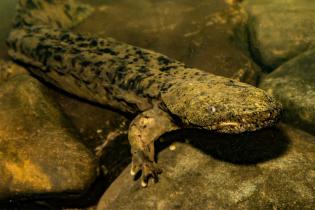Search
Page
NFWF to Support Development of Florida Gulf Environmental Benefit Fund Restoration Strategy
The National Fish and Wildlife Foundation (NFWF) today announced an award of up to $4.5 million to the
Landscape
Central Appalachia
Formed 480 million years ago, the Appalachians are the oldest mountain range in North America. Central Appalachia boasts some of the world’s oldest river systems and most biologically diverse temperate deciduous forests. The region’s forests, streams, rivers, wetlands and floodplains host a remarkable variety of flora and fauna with long evolutionary histories. For centuries local economies have relied on the region’s rich and abundant natural resources — its expansive forests for logging, its fertile valleys for farming, and its abundant sources of energy.Image

Page
Landscapes
The National Fish and Wildlife Foundation has selected a set of priority landscapes aimed at delivering ambitious but measurable outcomes for species and habitats in the region. Each landscape has a business plan developed by scientists and other experts, and approved by the Foundation's Board of Directors. These business plans outline the conservation goals, strategies and metrics the Foundation will use to track progress. Grants are available to support the strategies and actions identified in the business plan. Our landscapes will continue to grow as more business plans are developed.
Page
Species
Conservation programs funded by the National Fish and Wildlife Foundation benefit hundreds of species and the habitats they depend on across the United States. NFWF has developed conservation strategies with measurable outcomes that track progress for many of these species. These species are good indicators of healthy habitats.
Page
Programs
The National Fish and Wildlife Foundation awards competitive grants through our programs to protect and conserve our nation’s fish, wildlife, plants and habitats. The Foundation works with public and private partners in all 50 states and U.S. territories to solve the most challenging conservation problems. Explore our programs below to learn about their conservation goals and strategies, and the species and landscapes they support.
Landscape
Chesapeake Bay Watershed
Recognized as a “national treasure” for its historical, cultural, economic and ecological significance, the Chesapeake is the largest estuary in North America and one of the most productive in the world. Its watershed stretches across more than 64,000 square miles in the Mid-Atlantic, spanning from Norfolk, Virginia to Cooperstown, New York and from the sandy coastal plains of Delmarva Peninsula in Delaware and Maryland to the headwaters of the Potomac River in West Virginia’s Appalachian Mountains.Image

Page


